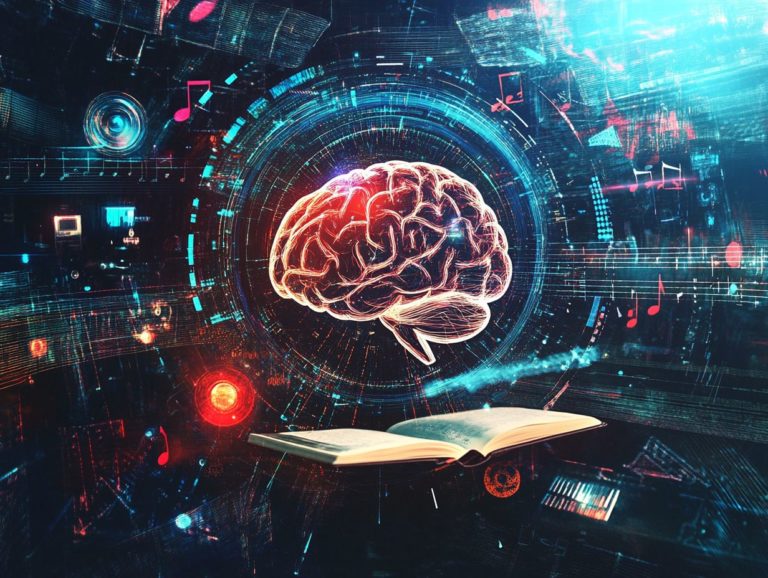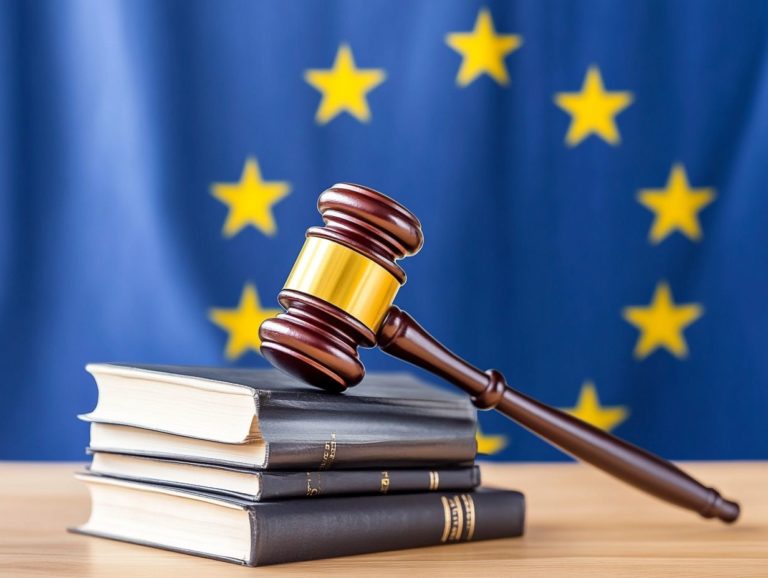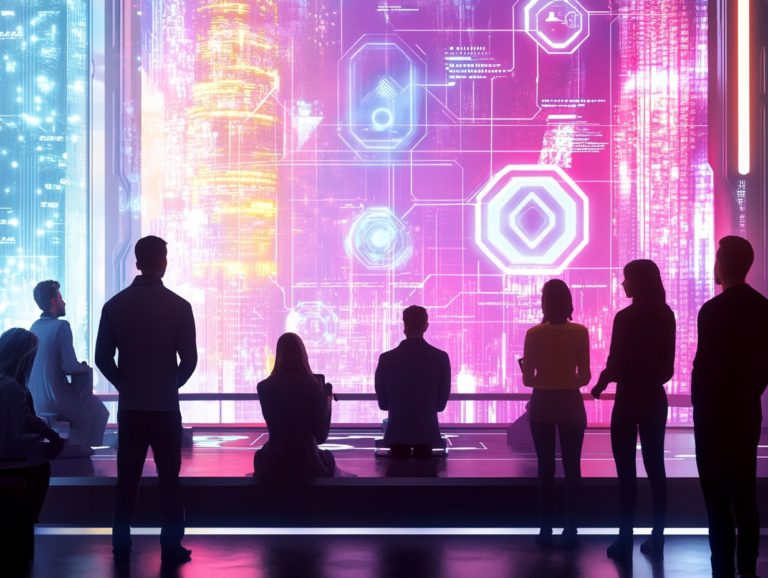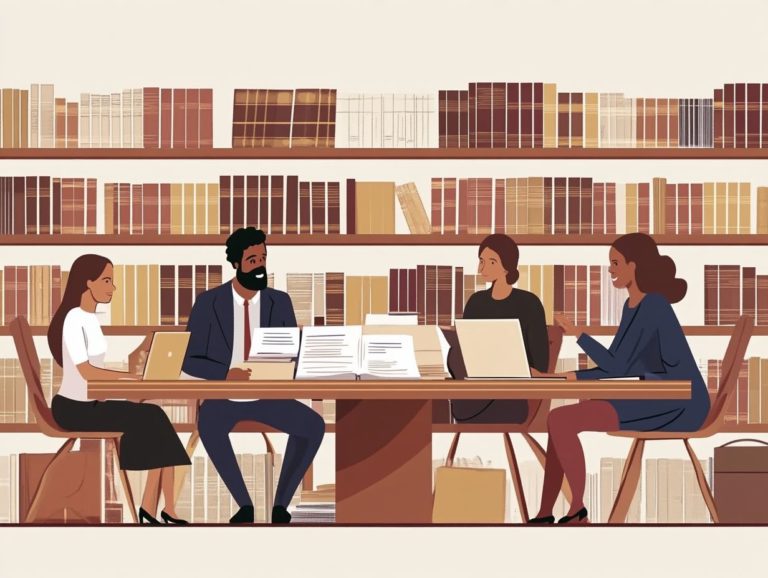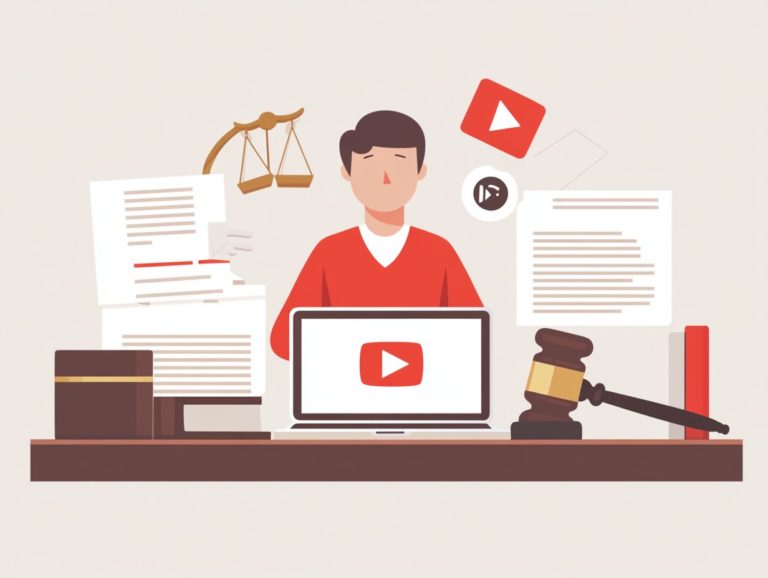The Relationship Between Copyright and Plagiarism
Copyright and plagiarism are often misunderstood. Yet, they serve vital roles in safeguarding creativity and maintaining intellectual integrity.
This article unpacks the definitions and distinctions between these two concepts. It offers you a comprehensive overview of copyright laws and the serious consequences of infringement.
It delves into various types of plagiarism, including direct, indirect, and self-plagiarism. You will also find practical tips on proper citation and tools designed to help you avoid these pitfalls.
It also looks at how plagiarism affects society ethically and legally.
Dive in now to protect your work and the creative community!
Contents
Key Takeaways:
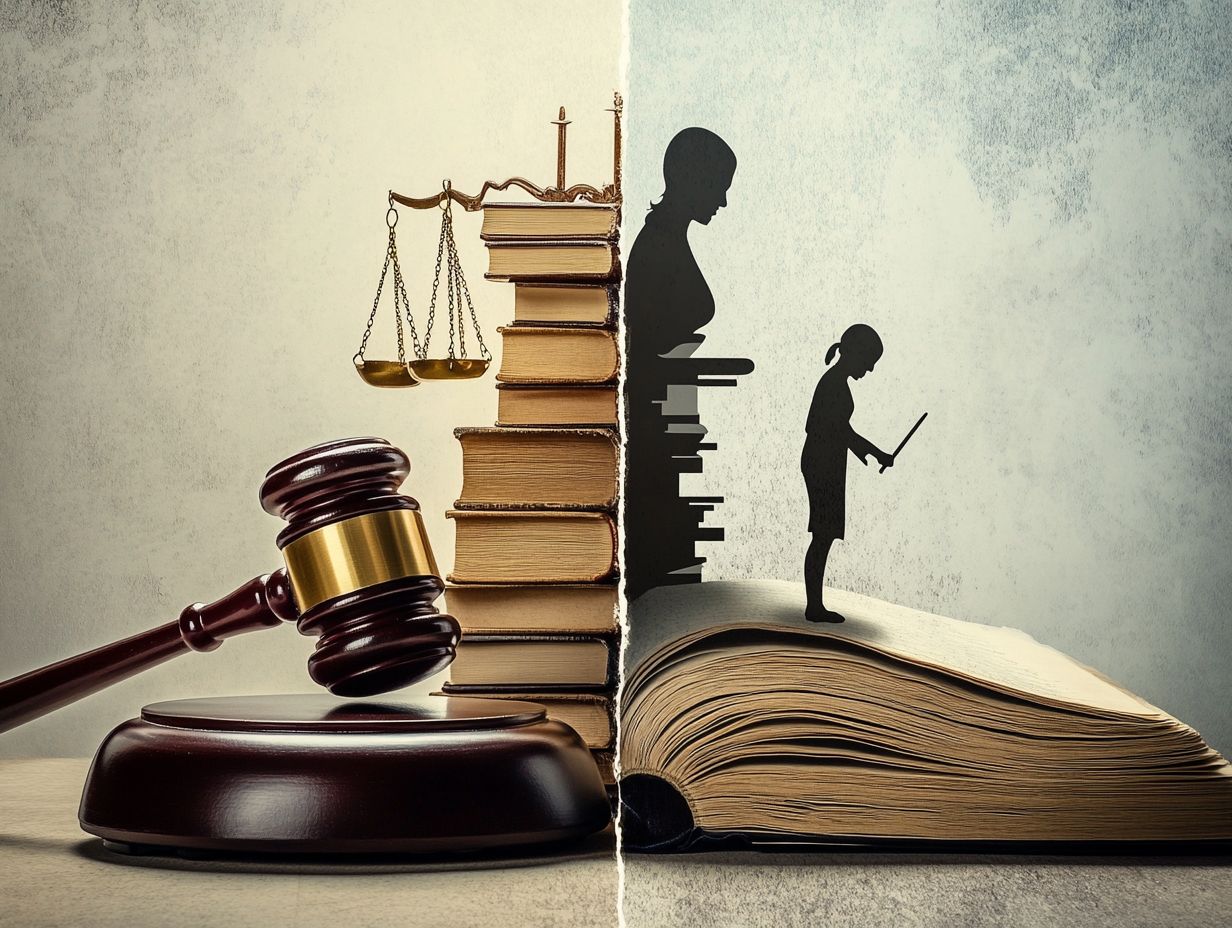
Understanding the difference between copyright and plagiarism is crucial. Proper citation and attribution can help you avoid plagiarism, along with tools for checking originality.
Plagiarism has legal issues and negatively impacts society by devaluing original work and hindering intellectual progress.
Understanding Copyright and Plagiarism
Understanding copyright and plagiarism is crucial for keeping honesty in academics and honoring the rights of original creators.
Copyright safeguards creative works, ensuring that artists and authors receive the recognition they deserve. Plagiarism pertains to the unauthorized use of another’s ideas or work without appropriate attribution.
In academic contexts, distinguishing between copyright infringement and plagiarism is vital. Both represent serious ethical breaches that can carry significant repercussions.
Schools in the U.S. and India stress the importance of originality and careful citing in their academic standards.
Defining and Differentiating the Terms
Defining and distinguishing between the terms ‘plagiarism’ and ‘copyright infringement’ is essential for clarifying the ethical issues surrounding original work and the legal matters tied to creative endeavors.
Plagiarism means presenting someone else’s ideas or expressions as your own without giving credit. This can happen directly, like copying text word-for-word, or more subtly, by paraphrasing without citation.
Copyright infringement, on the other hand, enters a more legal arena. It involves using copyrighted material without permission and violates the rights held by the creator.
Both issues present significant ethical dilemmas. Plagiarism undermines your credibility, whereas copyright infringement can lead to legal consequences that may stifle your creative expression.
Understanding these distinctions is crucial for fostering respect for the rights to your creative work and promoting originality in your work.
Copyright Laws and Regulations
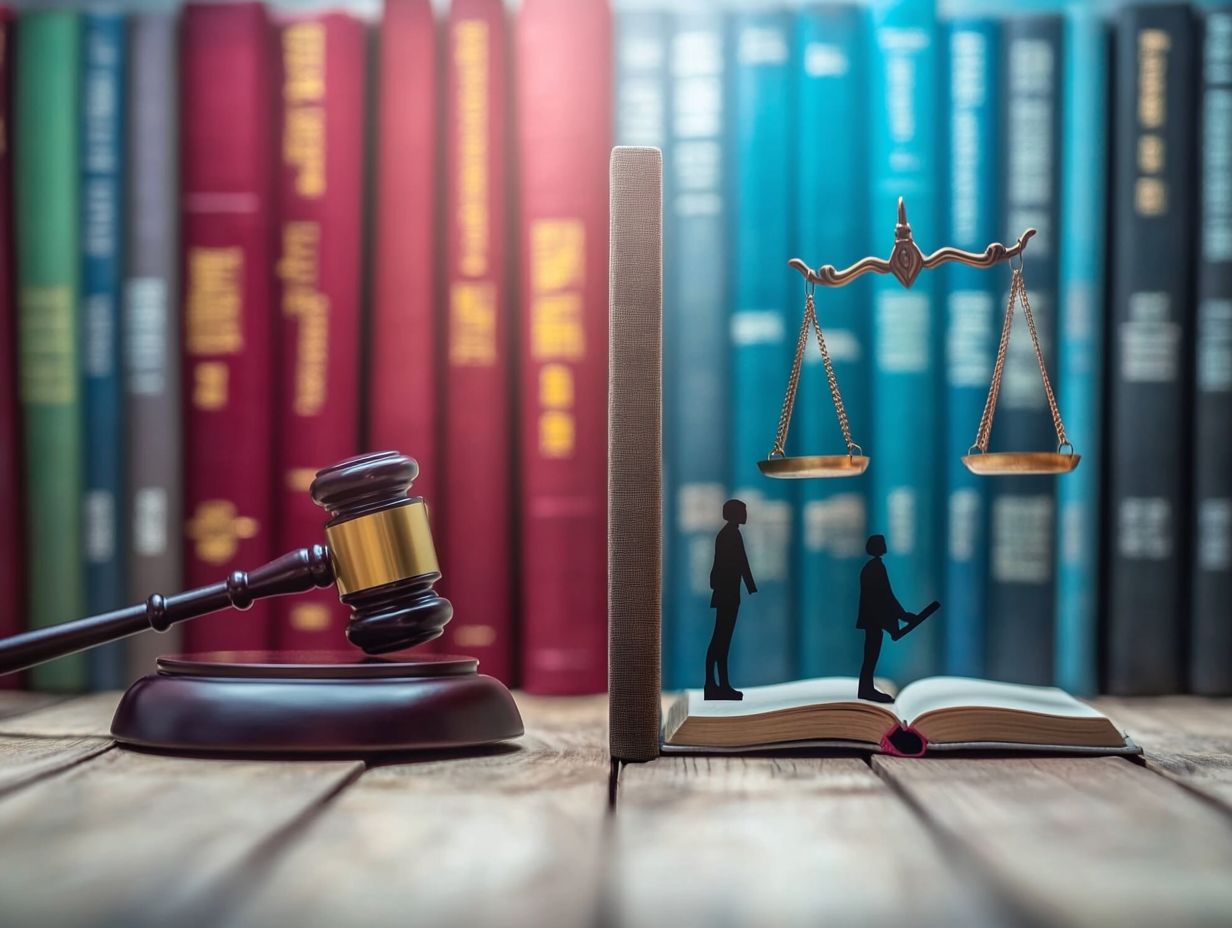
Copyright laws and regulations, like the Copyright Act of 1957 in India, exist to protect your rights as a creator. They ensure that your original works receive the copyright protection they deserve.
These laws create a legal framework around content ownership. They clearly define the rights that belong to you, the copyright holder, and the legal repercussions of unauthorized use.
Understanding these regulations is essential for you to safeguard your works based on your original creations and navigate the complexities of copyright law effectively.
Overview of Copyright Laws
An overview of copyright laws highlights their essential role in safeguarding creative works. They ensure that you, as a creator, maintain control over your original content.
These laws confer upon you exclusive rights to reproduce, distribute, and publicly perform your works. This enables you to reap financial rewards from your creativity.
Organizations like the Copyright Alliance are instrumental in advocating for these rights. They ensure that you can effectively defend against unauthorized use and infringement.
Grasping the intricacies of copyright law is crucial for artists, writers, and musicians alike. The legal landscape continues to shift, and its implications go beyond simple ownership.
Copyright shapes the very framework within which you operate, influencing how you share your work and engage with your audience.
Consequences of Copyright Infringement
The consequences of copyright infringement can be severe, including legal repercussions, financial penalties, and damage to your reputation.
When you act unethically, you’re not just risking lawsuits and fines; you re also jeopardizing future opportunities in both academic and professional settings.
For instance, a student caught submitting plagiarized work may face expulsion, while an artist could lose trust among peers and industry leaders.
Plagiarism undermines the integrity of creative fields and stifles innovation. Whether in a classroom or the arts, the repercussions extend far beyond immediate penalties, creating a web of challenges that can hinder personal and professional growth.
Types of Plagiarism
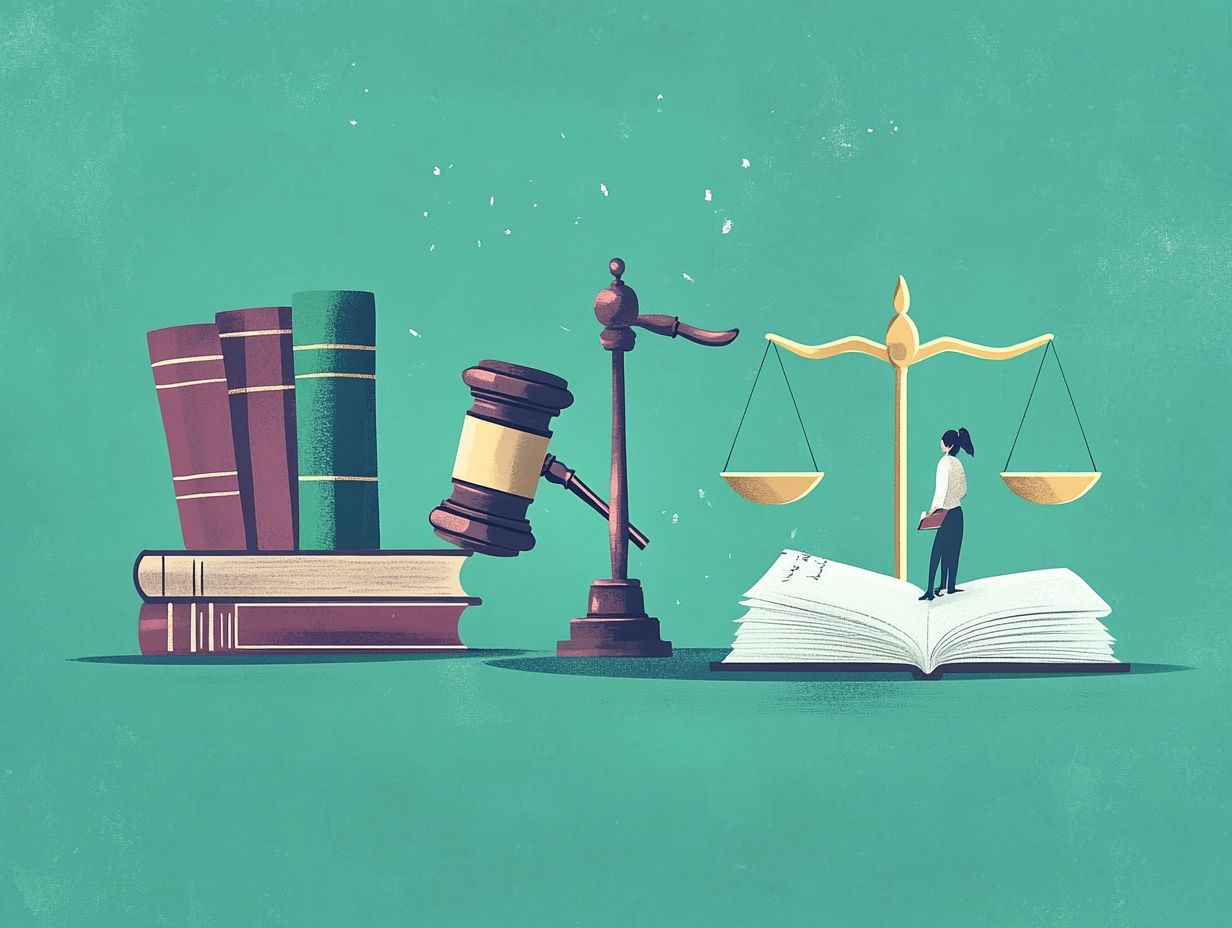
Plagiarism appears in several forms, including direct plagiarism, indirect plagiarism, and self-plagiarism, each presenting challenges to academic integrity.
Understanding these categories is essential for maintaining high scholarly standards.
Direct and Indirect Plagiarism
Direct and indirect plagiarism are distinct forms of academic violations that undermine original authorship.
Direct plagiarism occurs when you copy someone else’s work word-for-word without proper attribution. For example, submitting a classmate’s essay as your own can lead to serious consequences.
Indirect plagiarism is subtler; it happens when you paraphrase or summarize another’s ideas without credit, blurring the lines of ownership. Both forms impact academic integrity by eroding trust among peers and educators.
A reputation stained by these actions can impede future opportunities, including internships and jobs, ultimately affecting your career path.
Self-Plagiarism
Self-plagiarism occurs when you submit your previous work as if it were new, risking a violation of academic integrity standards.
This practice raises concerns within institutions where originality is valued. Such actions can undermine your credibility and that of your institution, leading to disciplinary measures and lost trust.
Self-plagiarism complicates the concept of original authorship, blending the reuse of content and new idea generation.
To uphold integrity, it s vital to properly cite your prior work, even if it s yours, fostering a culture of transparency and respect for intellectual contributions.
How to Avoid Plagiarism
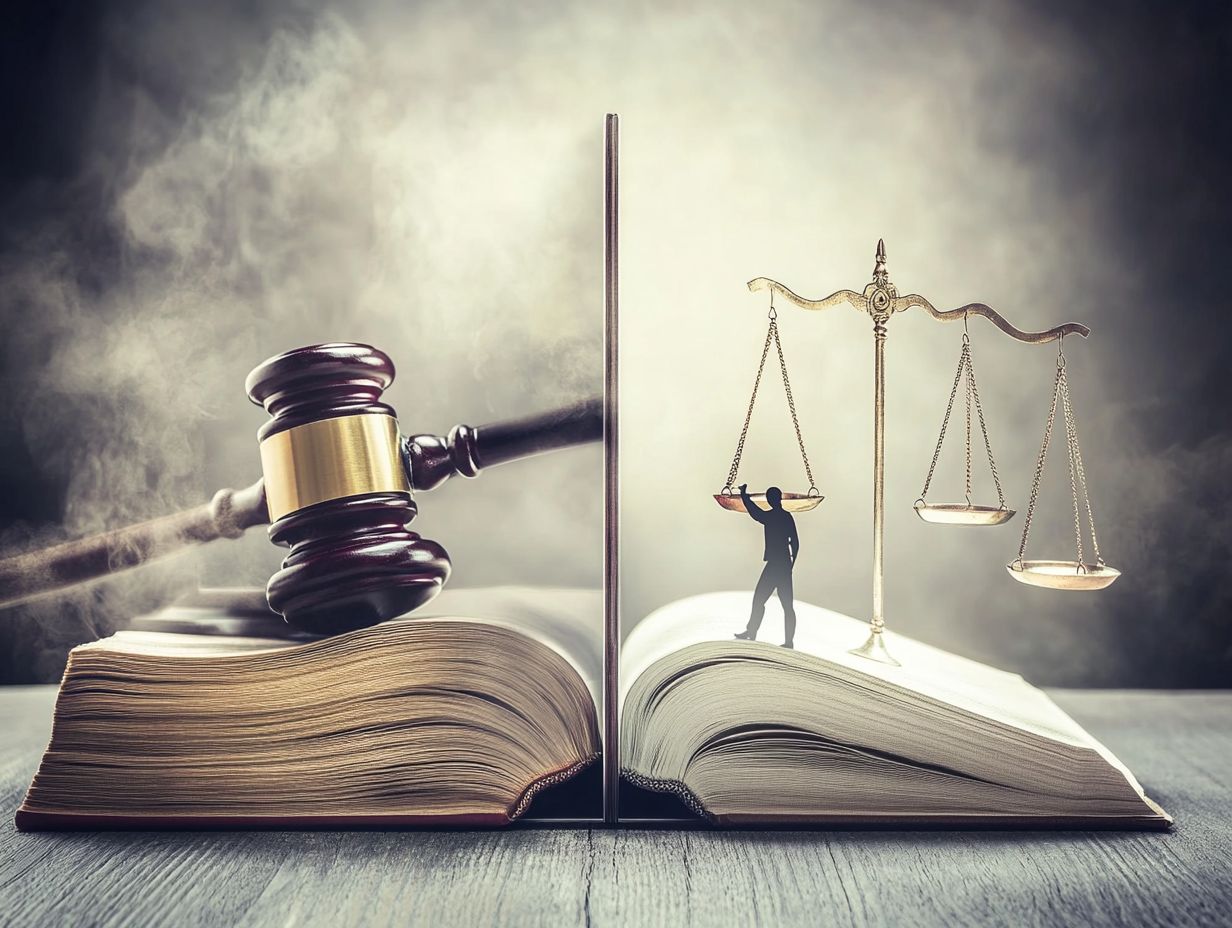
Avoiding plagiarism is essential for maintaining academic integrity.
You can achieve this by employing proper citation practices and using tools to check for unintentional similarities in your work.
Proper Citation and Attribution
Proper citation and attribution are fundamental practices in academia that ensure authors receive recognition for their contributions.
Using citation styles like APA or MLA helps clarify your sources and align with your academic field.
By adhering to these styles, you enhance the readability of your work and cultivate a culture of honesty among scholars.
Incorporating sound citation practices reduces the risk of plagiarism, which can jeopardize the integrity of your research. Upholding these standards reflects your commitment to ethical scholarship and fosters credible academic dialogue, benefiting the entire academic community.
Start citing your sources today to protect your academic integrity!
Tools and Resources for Checking Plagiarism
Utilizing tools and resources to check for plagiarism is essential for you and your academic institution. It helps identify ethical violations and promotes the value of original work.
You have access to various plagiarism detection tools like Turnitin, Grammarly, and Unicheck. These tools offer functionalities ranging from text comparison against extensive databases to real-time grammar and style checks.
By leveraging these technologies, both educators and learners can ensure submissions are free from copied content. This fosters a culture of integrity in academic writing.
These platforms not only pinpoint potential issues but also provide valuable feedback, enabling you to refine your writing skills and grasp proper citation practices.
As academic integrity gains importance, using these tools can help us all stay ethical! Adopting these tools significantly deters unethical behaviors, allowing original thought and creativity to thrive.
The Impact of Plagiarism on Society
The impact of plagiarism on society reaches far beyond isolated incidents; it profoundly affects academic institutions, erodes public trust, and garners media scrutiny regarding ethical implications across various domains.
Ethical and Legal Implications
The ethical and legal implications of plagiarism and copyright infringement reveal significant consequences you might face when violating the rights of copyright holders. Such violations not only tarnish your personal credibility but can also expose you to legal actions that result in hefty fines or litigation.
It is essential for you to recognize that failing to give proper credit or unlawfully using someone else’s work undermines the original creator’s work. Upholding ethical standards is not merely a moral obligation; it serves as a cornerstone of a fair and just society.
By adhering to these principles, you cultivate a culture of respect and integrity. This ensures that your contributions are valued while honoring the rights of others.
Frequently Asked Questions
What is the relationship between copyright and plagiarism?
The relationship is that plagiarism is a violation of copyright. Copyright laws protect the rights of creators to their original work, while plagiarism is the act of using someone else’s work without giving proper credit or permission. For a deeper understanding, explore the relationship between patents and copyrights.
Can you plagiarize something that is not protected by copyright?
Yes, you can still commit plagiarism even if the work is not protected by copyright. Plagiarism is about using someone else’s ideas or words without giving credit, regardless of the legal protection of the work.
What are the consequences of committing plagiarism?
The consequences can range from a failing grade to legal action, depending on the severity and circumstances of the offense. Plagiarism can also damage one’s reputation and credibility.
How can I make sure I am not plagiarizing?
To avoid plagiarism, give credit to the original source of any ideas, words, or images used in your work. This can be done through proper citations, quotations, and paraphrasing. It’s also important to use multiple sources and not rely solely on one.
How can I protect my own work from being plagiarized?
You can protect your work by registering for copyright protection. This gives you legal evidence of ownership and the ability to take legal action against those who plagiarize your work. You can also use plagiarism detection tools to check for any instances of plagiarism in your work.
Is it okay to use copyrighted material for educational purposes?
It is generally acceptable to use copyrighted material for educational purposes, such as in research and academic work. However, it’s important to properly cite and give credit to the original source. Fair use guidelines should also be followed to determine the extent of use and whether it falls under educational purposes.
Now is the time to start using plagiarism checking tools and seek help if you are uncertain about proper citation methods!


